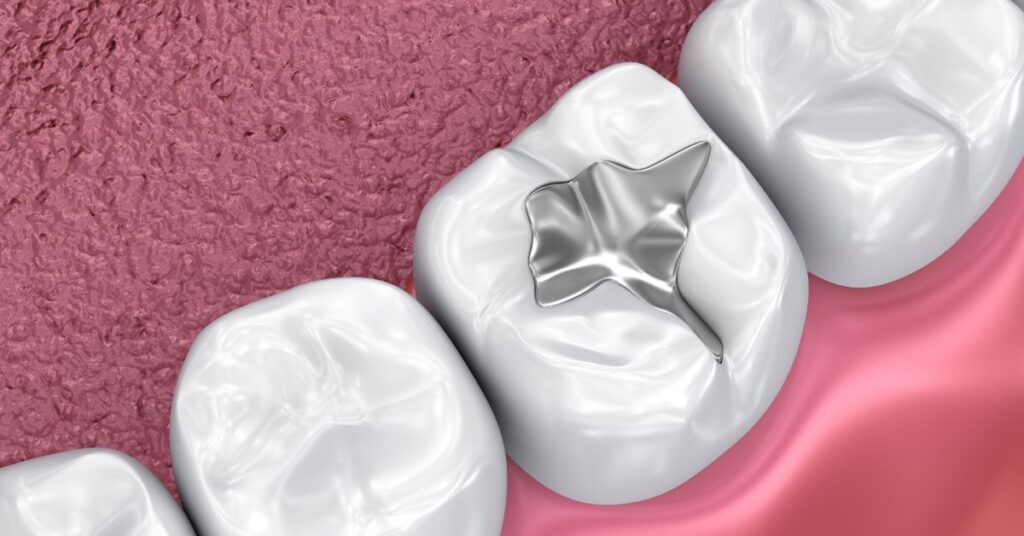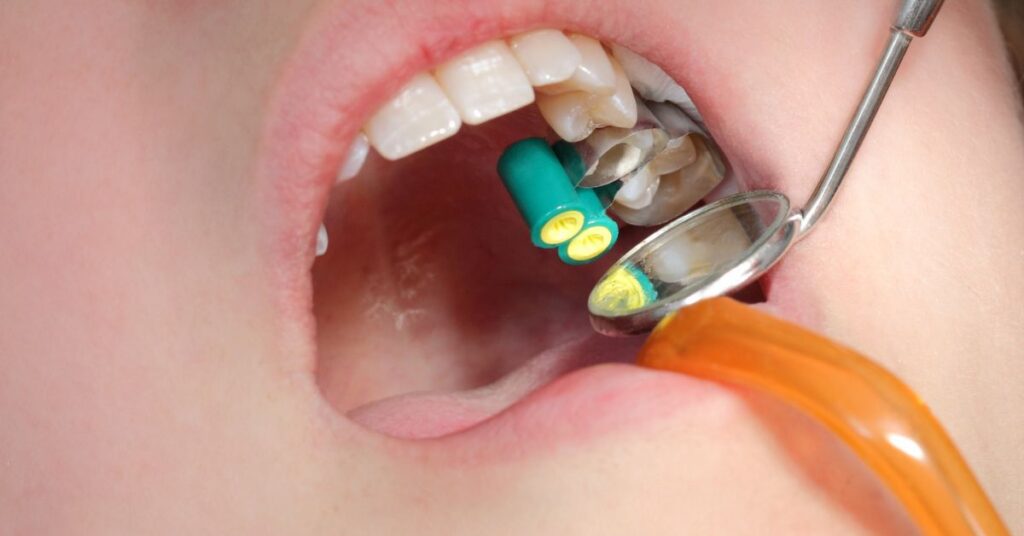
Introduction to Dental Fillings
What are Dental Fillings?
Dental fillings, also known as tooth fillings, are a common dental procedure that involves placing a material into a cavity or hole in a tooth to restore its function and prevent further decay. Cavities are caused by a buildup of bacteria that produce acids, gradually eroding the tooth enamel and dentin. Dental fillings help to seal the cavity, preventing further damage to the tooth and restoring its structural integrity.
The Importance of Dental Fillings
Dental fillings are crucial for maintaining oral health and preventing further dental problems. They offer several benefits, including:
- Preventing further tooth decay: By sealing the cavity, dental fillings prevent bacteria from entering the tooth and causing further damage.
- Restoring tooth function: Dental fillings restore the tooth’s shape and structure, allowing for proper chewing, biting, and speaking.
- Improving aesthetics: Dental fillings can be matched to the natural colour of the tooth, enhancing the overall appearance of the smile.
- Maintaining oral health: Dental fillings help to maintain overall oral health by preventing infection and preserving the integrity of the teeth.
Understanding the Different Types of Dental Fillings
There are various types of dental fillings available, each with its own unique characteristics, advantages, and disadvantages. The choice of filling material depends on factors such as the extent of the cavity, the location of the cavity, the patient’s preferences, and cost considerations.
Amalgam Fillings
Amalgam fillings, also known as silver fillings, are a traditional type of filling that has been used for decades. They are made from a mixture of metals, including mercury, silver, copper, and tin. Amalgam fillings are durable, long-lasting, and relatively inexpensive. However, they may not be the best aesthetic choice due to their silver colour.
Composite Fillings
Composite fillings are a popular choice for tooth-coloured restorations. They are made from a resin material that can be bonded to the tooth, providing a natural-looking appearance. Composite fillings are also strong and durable, making them suitable for a wide range of cavities.
Glass Ionomer Fillings
Glass ionomer fillings are a type of filling that releases fluoride, which helps to prevent further tooth decay. They are often used for fillings in children or patients with a high risk of decay. Glass ionomer fillings are not as strong as composite fillings, but they are less expensive.
Gold Fillings
Gold fillings are the most durable type of filling material, making them ideal for large cavities or those in areas of high stress. However, gold fillings are also the most expensive type of filling.
Ceramic Fillings
Ceramic fillings, also known as porcelain fillings, are a newer type of filling material that offers excellent aesthetics and durability. They are made from a ceramic material that can be matched to the natural colour of the tooth.
Choosing the Right Dental Filling for Your Needs

Factors to Consider When Choosing a Dental Filling
Extent of the Cavity and Tooth Damage
The size and location of the cavity play a significant role in determining the most suitable filling material. For small, superficial cavities, composite fillings or glass ionomer fillings may be sufficient. However, for larger, deeper cavities or those in areas of high stress, more durable materials like amalgam or gold may be preferred.
Location of the Cavity and Tooth Visibility
If the cavity is visible when you smile, a tooth-coloured filling like composite or ceramic may be preferred for aesthetic reasons. These materials can be closely matched to the natural colour of your teeth, ensuring a seamless and aesthetically pleasing appearance.
Personal Preferences and Cost Considerations
When choosing a dental filling, it is essential to consider your personal preferences and budget. Discuss your preferences with your dentist, and they can provide you with cost estimates and explain the pros and cons of each filling material.
Consulting with Your Dentist for Personalized Recommendations
Your dentist is a valuable resource in helping you choose the right dental filling for your needs. They will assess the cavity, consider your individual preferences, and provide personalized recommendations based on your specific situation.
Understanding the Dentist’s Assessment and Proposed Treatment Plan
Your dentist will carefully examine the cavity and provide a detailed assessment of its size, location, and depth. They will then explain the different filling material options available and discuss the advantages and disadvantages of each.
Discussing Concerns and Asking Questions to Make Informed Decisions
Do not hesitate to ask questions and clarify any concerns you may have. Your dentist is there to provide you with comprehensive information and help you make an informed decision about your dental filling.
Dental Filling Procedure and Aftercare

The Dental Filling Procedure Step-by-Step
The dental filling procedure typically involves the following steps:
- Anaesthesia administration: Anesthesia may be administered to numb the area around the cavity. This is usually done by injecting a local anaesthetic into the gums near the affected tooth. In some cases, a general anaesthetic may be used if the patient is anxious or has a strong gag reflex.
- Cavity preparation: The dentist will use a dental drill to remove the decayed tooth material. This process is known as “excavation.” The dentist will carefully remove all of the decayed material, ensuring that the cavity is clean and free of debris.
- Filling material placement and shaping: Once the cavity is prepared, the dentist will select the appropriate filling material and place it into the cavity. The filling material will be shaped to match the original tooth structure, ensuring a comfortable and natural-looking fit.
- Polishing and finalizing the filling: The final step in the dental filling procedure is to polish the filling to a smooth finish. This helps to remove any rough edges and ensures that the filling is comfortable to bite on. The dentist will also check the filling for proper fit and function.
Aftercare Instructions for Maintaining Dental Fillings
To ensure the longevity and success of your dental filling, it is important to follow your dentist’s aftercare instructions carefully. These instructions may vary depending on the type of filling material used and the individual patient’s needs. However, some general aftercare tips include:
- Avoid biting or chewing on hard foods immediately after the procedure. This will give the filling time to harden and set properly.
- Avoid hot and cold foods and beverages for the first few days after the procedure. This can help to reduce sensitivity and discomfort.
- Maintain good oral hygiene practices. Brush and floss your teeth regularly and use a mouthwash to keep your mouth clean and free of bacteria.
- Schedule regular dental checkups. Regular dental checkups allow your dentist to monitor your fillings and address any potential problems early on.
Additional Aftercare Tips
In addition to the general aftercare tips mentioned above, there are some additional tips that may be helpful depending on the type of filling material used:
- For amalgam fillings: Avoid scratching the filling with metal objects.
- For composite fillings: Avoid exposing the filling to excessive sunlight or heat.
- For glass ionomer fillings: Avoid consuming acidic foods and beverages immediately after the procedure.
- For gold fillings: There are no specific aftercare instructions for gold fillings.
Monitoring for Complications
In most cases, dental fillings are successful and do not cause any complications. However, there are some potential complications that can occur, such as:
- Sensitivity to hot and cold foods and beverages: This is a common temporary side effect of dental fillings. It usually goes away on its own within a few days or weeks.
- Pain or discomfort: Mild pain or discomfort is also common after a dental filling. This can be managed with over-the-counter pain relievers.
- Chipping or cracking: Dental fillings can chip or crack, especially if they are made of amalgam or composite material. This is more likely to occur if you bite on hard foods or grind your teeth.
- Falling out: In rare cases, a dental filling may fall out. This is more likely to occur with older fillings or if the cavity was very large.
Conclusion: Maintaining Oral Health with Dental Fillings

Dental fillings play a crucial role in maintaining good oral health by preventing further tooth decay, restoring tooth function and aesthetics, and promoting overall well-being. As discussed in this comprehensive guide, dental fillings are effective and restorative dental procedures that offer a range of benefits.
The Significance of Dental Fillings in Preventive Dentistry
Dental fillings are an integral part of preventive dentistry. By sealing cavities and preventing further tooth decay, dental fillings help to preserve the health and integrity of the teeth. They also prevent the development of more serious dental problems, such as tooth loss and gum disease.
Preventing further tooth decay and preserving oral health
Dental fillings act as a protective barrier, preventing bacteria from further eroding the tooth enamel and dentin. This helps to maintain the structural integrity of the teeth and prevents the progression of tooth decay.
Restoring tooth function and aesthetics for overall well-being
Dental fillings restore the shape and structure of the teeth, allowing for proper chewing, biting, and speaking. They also improve the appearance of the smile, boosting self-confidence and overall well-being.
The Role of Regular Dental Checkups in Maintaining Oral Health
Regular dental checkups are essential for maintaining oral health and preventing dental problems. During these checkups, dentists can detect cavities early on, allowing for timely intervention and treatment with dental fillings. Early detection and treatment can prevent the progression of tooth decay and the need for more extensive dental procedures.
Early detection and treatment of dental issues
Regular dental checkups allow dentists to identify cavities and other dental problems in their early stages. This enables prompt treatment with dental fillings, preventing the spread of decay and preserving the health of the teeth.
Preventive measures and personalized dental care recommendations
Dentists can provide personalized recommendations for preventive measures, such as proper oral hygiene practices and a balanced diet, to reduce the risk of future dental problems. These preventive measures can help to prolong the lifespan of dental fillings and maintain overall oral health.
